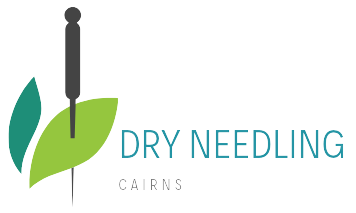Acupuncture to induce your labour in Cairns. More and more midwives are referring patients to try acupuncture to bring on labour. It is safe after 39 weeks but the most ideal time is when the baby has gone by the due date. This means that the cervix will be more ready to ripen. The bishop score is a way of telling if a cervix is ready to give birth. If the bishop score is favourable…then the outcome of the acupuncture treatment to induce labour will be more favourable.
Acupuncture to induce your labour in cairns is used to increase your prostaglandin and oxytoxin levels. It may also relax you and help you with settling your fears around giving birth. During your session we may do some visualisations while the needles are in.
The needles do not go into the belly. They are located on the hands and feet and may be stimuated often. The treatment takes between 60 minutes to 90 minutes and may require follow up appointments. So not just a one time thing.
Acupuncture can be used to help with the symptoms of
- associated with labour pain
- pain and discomfort associated with back pain during pregnancy
- pain and discomfort associated with hip pain during pregnancy
If you would like to check our available appointment times or make a booking please click on this link http://cairns-massage-cairns-acupuncture.au1.cliniko.com/bookings
or click on this link https://dryneedlingcairns.com.au and go to book online button.
or you can click the book online button on the www.cairnsmassage.net.au website.
or send a text to 0408 054 538.
Description of beginnings of labour
In pre-labour or early labour (the latent phase), you may have: Persistent lower back pain or abdominal pain, with a pre-menstrual feeling and cramps. Painful contractions or tightenings that may be irregular in strength and frequency, and may stop and start .
Regular contractions
When you have a contraction, your womb (uterus) gets tight and then relaxes. You may have had contractions throughout your pregnancy, particularly towards the end. During pregnancy, these painless tightenings are called ‘Braxton Hicks‘ contractions.
When you are having regular, painful contractions that feel stronger and last more than 30 seconds, labour may have started. As labour gets going (gets established) your contractions tend to become longer, stronger and more frequent.
During a contraction, the muscles in your womb contract and the pain increases. If you put your hand on your abdomen, you can feel it getting harder. When the muscles relax, the pain fades and your hand will feel the hardness ease. The contractions are pushing your baby down and opening your cervix (entrance to the womb) ready for your baby to go through.
Your midwife or doctor will probably advise you to stay at home until your contractions are frequent. When your contractions are coming every 5 minutes, it’s time to go to the hospital.
Backache
You may have either backache or the aching, heavy feeling that some women get with their monthly period.
A ‘show’
While you are pregnant, a plug of mucus is present in your cervix. Just before labour starts, or in early labour, the plug comes away and you may pass this out of your vagina. This small amount of sticky, jelly-like pink mucus is called a ‘show’.
It may come away in one blob, or in several pieces. It is pink in colour because it’s blood-stained, and it’s normal to lose a small amount of blood mixed with mucus. If you’re losing more blood, it may be a sign that something is wrong, so telephone your hospital or midwife straight away.
A show indicates the cervix is starting to open, and labour may follow quickly, or it may take a few days. Some women do not have a show.
Your waters breaking
Most women’s waters break during labour, but it can also happen before labour starts. Your unborn baby develops and grows inside a bag of fluid called the amniotic sac. When it’s time for your baby to be born, the sac breaks and the amniotic fluid drains out through your vagina. This is your waters breaking.
When this happens, call your midwife or doctor, so they can ask you some questions and check your condition.
You may feel a slow trickle, or a sudden gush of water that you cannot control. To prepare for this, you could keep a sanitary towel (but not a tampon) handy if you are going out, and put a plastic sheet on your bed.
Amniotic fluid is clear and a pale straw colour. Sometimes it’s difficult to tell amniotic fluid from urine. When your waters break, the water should be clear or slightly pink. If it appears greenish or bloody, see a doctor or your hospital immediately, as this could mean you and your baby need urgent attention.
If your waters break before labour starts, phone your midwife or the hospital for advice. Without amniotic fluid your baby is no longer protected and there is a risk of infection.
Coping at the beginning of labour
At the beginning of labour:
- you can be up and moving about if you feel like it
- you can drink fluids and may find isotonic drinks (some sports drinks) help keep your energy levels up
- you can also snack, although many women don’t feel very hungry and some feel sick
- as the contractions get stronger and more painful, you can try relaxation and breathing exercises – your birth partner can help by doing them with you
- your birth partner can rub your back as it may help relieve the pain.
What is Acupuncture
Acupuncture is an important part of Traditional Chinese Medicine, along with Chinese herbal medicine, tui na (orthopedic massage) and Qi Gong (meditation and energy healing.)
With a history of almost 3000 years it is still used extensively today to treat literally millions of people around the world.
Acupuncture affects the physiological functioning of the body by the insertion of fine needles into particular reflex points all over the body. Becauseit is a primary health care system in itlsef, acupuncture can be used to treat most health problems, ranging from colds and flus, to neck and back problems, to insomnia and chronic fatigue.
How does acupuncture work?
Medically acupuncture works by regulating carious systems in the body – hormonal, nervous, immune, circulatory, muscular etc.
In traditional Chinese Medicine theory, acupuncture regulates the flow of qi (pronounced chee), a type of unseen energy or electromagnetic force traveling in a system of channels which connect acupncture points to tissues and organs.
Qi takes on many forms in the body, and is the foce that warms us, digests our food, moves our limbs and basically keeps us alive. When the qi, blood, fluids or spirit are somehow affected, the result is pain, discomfort or disease. Acupuncture can affect the flow of Qi in the channels and organs, thereby affecting hormones, nerves and muslces, immunity, circulation and so on.
Does it Hurt?
Some sensitive patients do feel some discomfort when the needles first go in, but most people are pleasantly surprised at how comfortable acupuncture therapy is, often falling asleep on the treatment table. The needles are generally between 0.2 and 0.25mm in width. Five of these fit in the bore of one hyperdermic needle….they are as fine as a human hair!
They are inserted quickly to minimize skin pain, and when correctly stimulated, there is a feeling of tingling, mild cramping or an electric sensation at the point.
How deep the needles are inserted varies from a few millimetres to a couple of inches or more depending on the size of the patient and where the point lies on the body.
Do Acupuncturist have to study in China?
Australia is leading the western world in it’s availability of university based degree courses in Chinese Medicine – majoring in acupuncture, Chinese Herbal Medicine, or both – and most of these institutions have affiliations with Chinese Medicine teaching hospitals to provide an opportunity for post-graduate study. Chinese Medicine practitioners are now governed by new ligeslation passed on by Australian Government preventing unqualified people from calling themselves Acupuncturists or Chinese Medicine Practitioners.
Please phone Tanya on 0408 054 538 or email tanyagalvin@hotmail.com
Acupuncture for Back or pelvic pain during pregnancy
Acupuncture Labour Cairns / Acupuncture Labour Cairns / Acupuncture Labour Cairns / Acupuncture Labour Cairns / Acupuncture Labour Cairns / Acupuncture Labour Cairns / Acupuncture Labour Cairns
acupuncture parramatta park / acupuncture parramatta park / acupuncture parramatta park / acupuncture parramatta park / acupuncture parramatta park / acupuncture parramatta park /acupuncture parramatta park / acupuncture parramatta park / acupuncture parramatta park /acupuncture parramatta park / acupuncture parramatta park / acupuncture parramatta park /

